
Hurricane Irma Leaves Island of Barbuda Uninhabited for the First Time in 4,000 Years
2017 is a turning point in the history of Barbuda. Due to the devastation of Hurricane Irma, this small Caribbean island currently has no human inhabitants. As Ambassador Ronald Sanders, Antigua and Barbuda’s ambassador to the U.S. since 2015, said “ For the first time in 300 years , there’s not a single living person on the island of Barbuda — a civilization that has existed on that island for over 300 years has now been extinguished.” All of Barbuda’s citizens were evacuated to the neighboring island of Antigua.
Barbuda’s Earliest Inhabitants
Barbuda has a much longer history of human occupation than 300 years though. Barbudaful provides an article on the island’s earliest inhabitants, saying that they probably arrived from the Yucatan peninsula in Mexico about 3000 to 4000 years ago. These were hunter gatherers who traveled to the island by canoe. They did not use ceramic, but had tools made from chert, created blades from the bodies of large gastropods, and used a variety of shells as vessels.
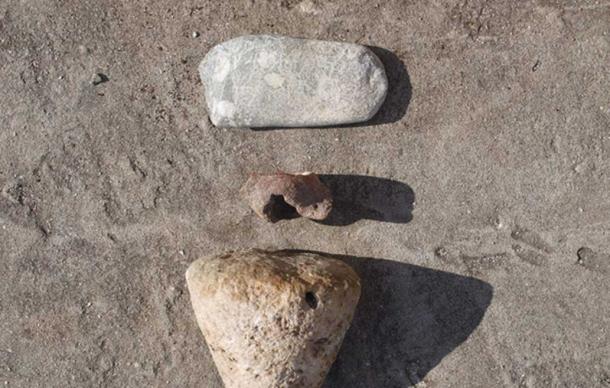
Amerindian artifacts discovered on Barbuda. ( Barbudaful)
The next group of individuals to arrive in Barbuda were Arawaks, also known as sub-Tainos people, who came from the area of modern Venezuela and Guyana about 2000 years ago. This cultural group had a greater knowledge of agriculture and they cultivated a variety of fruits, vegetables, and medicinal plants. Seafood, birds, and small mammals augmented the Arawak diet. The Arawak people were also skilled at pottery making.
Randy Hetrick, Founder TRX | FounderMade
- The Carolina Bays and the Destruction of North America
- Did Elusive Dark Matter Trigger Global Mass Extinctions and Doom the Dinosaurs?
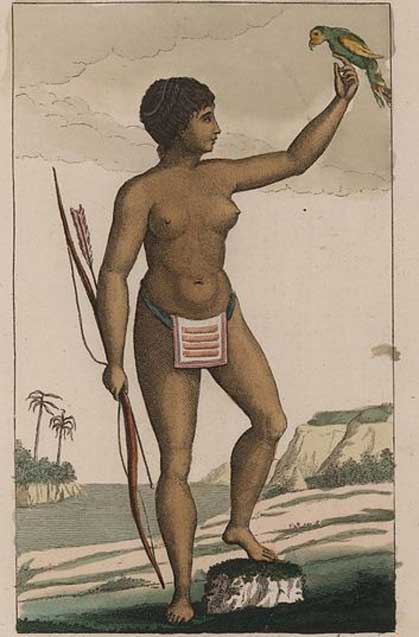
Arawak woman by John Gabriel Stedman, wearing a loin cloth of woven beads. (1818) ( Public Domain )
The final pre-European group to live on Barbuda, if only seasonally, were the Caribs. The Carib people have been depicted as generally more warlike than their predecessors on Barbuda and they caused difficulties for the later European inhabitants.
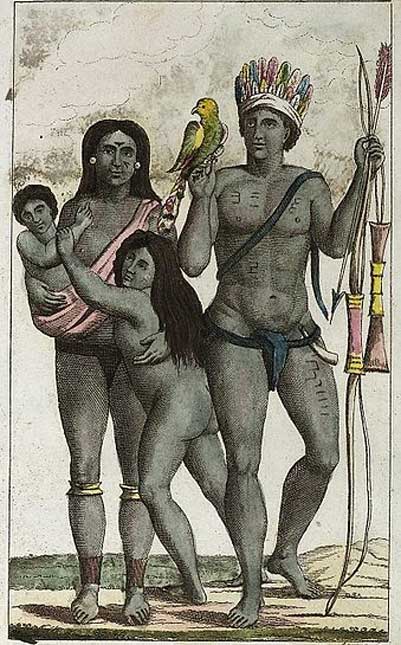
Carib (Kalina or Galibi) indian family after a painting by John Gabriel Stedman. (1818) ( Public Domain )
Shell and ceramic remnants left by the earliest inhabitants of Barbuda were relatively easy to discover across the island and several archaeological projects have been carried out over the years. Two of the most fascinating discoveries made to date are the skeleton of an Arawak man called ‘George’ (named after the hurricane which exposed his grave) and a Carcharodon megalodon (an extinct shark) tooth.
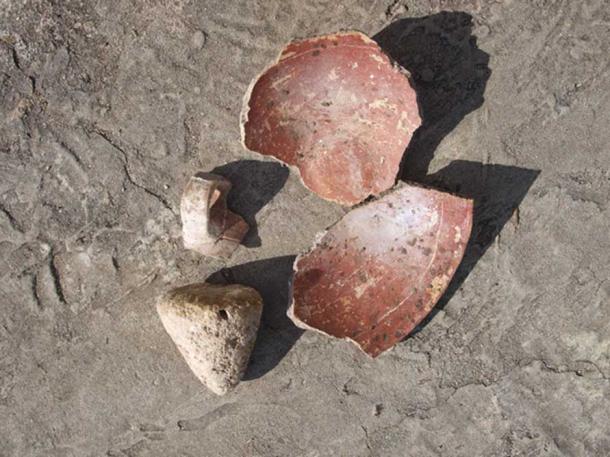
Amerindian pottery discovered on Barbuda. ( Barbudaful)
European Colonization
Dutch, Spanish, French, Portuguese and English explorers all tried to settle the Caribbean islands, including Barbuda, but according to The Commonwealth website, it was Britain which eventually annexed Barbuda in 1628.
Pirating, poverty, battles with the Caribs, and natural disasters took the lives of many people who tried to settle the islands in the early years following European contact.
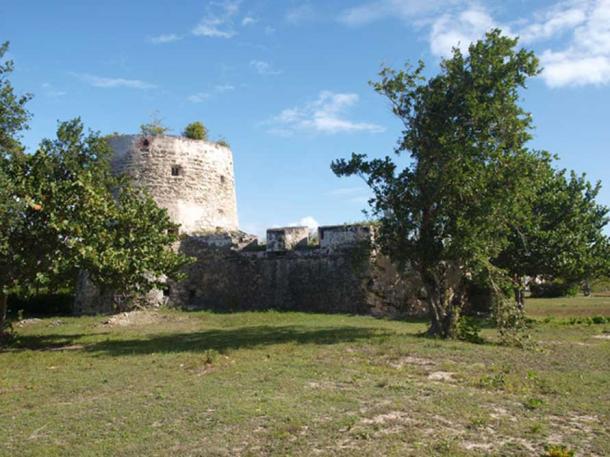
The Martello Tower on Barbuda. (Barbudaful)
Then the Codrington family “owned” the island from 1680 to 1860. The Codringtons were plantation owners and slave traders, who gained wealth and political power through sugar and slavery. It is said the Africans who were brought to Barbuda at that time came from the Ibo, Yoruba, and Ejo tribes of Nigeria, and from Ghana, Gambia, and Sierra Leone. White servants were also brought from the United Kingdom to serve the Codrington family.
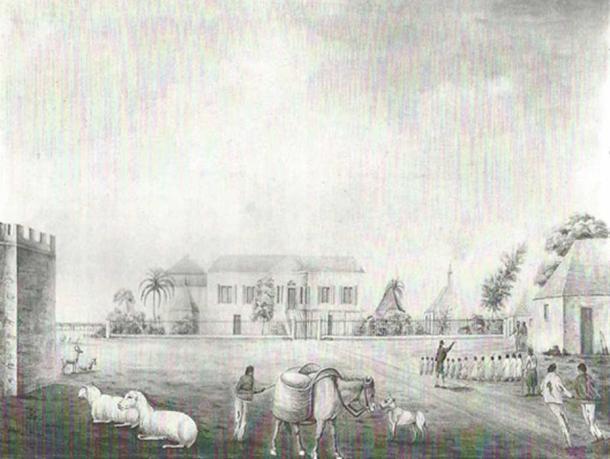
Codrington village depicting part of the castle ca. 1818. (Barbudaful)
Two major slave revolts took place on Barbuda in the 1740s; this practice continued on and off until “Barbudans freed themselves from slavery” (Barbudaful asserts the British Parliament did not name Barbudans in the Slavery Emancipation Act of 1834).
In 1860 Barbuda was annexed to Antigua.
- World’s Oldest Slave Cemetery May Have Been Found
- A history of sugar – the food nobody needs, but everyone craves
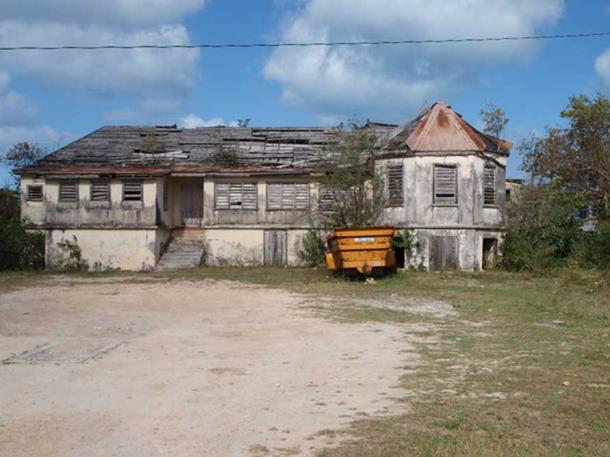
The Government House on Barbuda was built in 1694. ( Barbudaful)
Barbuda Today
Hurricane Irma has devastated the island of Barbuda and its evacuees, currently on Antigua, are in a difficult position. Ambassador Ronald Sanders told USA Today :
“The situation is unacceptable, and it’s costly. We’re going to have to keep this going for some time because Barbuda’s not going to be rebuilt in a hurry, and when we do rebuild it, we’re going to have to rebuild to massive hurricane standards. This is going to take a while. There is no electricity there, there is no potable water anymore, there is no structure in which people can survive. We have a mammoth task on our hands.”
http://www.ancient-origins.net/news-general/hurricane-irma-leaves-island-barbuda-uninhabited-first-time-4000-years-008798

